6 things you didn’t know about Chrysler’s turbine car
When Stephen Stills wrote “For What It’s Worth” in 1966, he was referring to a protest gone wrong, but the chorus could easily have been used by Chrysler’s experimental turbine-powered car program from 1964. A car with a jet engine? That sounds absurd.
Chrysler did build a small batch of turbine-powered cars, though, and a few became part of everyday life for a handful of lucky consumers. Even in a time when technology was advancing regularly, Chrysler’s turbine car pushed forward the automotive industry and the United States.
In June of 2022, the Hagerty Drivers Foundation (HDF) inducted the Chrysler Turbine into the federally recognized National Historic Vehicle Register. A year later, HDF has created a thorough documentary including interviews with experts on the turbine-car project, from engineers who were there from the start to collectors who have spent years chasing the few remaining Turbines.
We pulled out a few of the highlights from the documentary, which goes live today. If you like what you read here, the full video is embedded at the bottom of the article. Grab a cold drink, sink into a good chair, and give it a watch.
Everything started with Project A-86
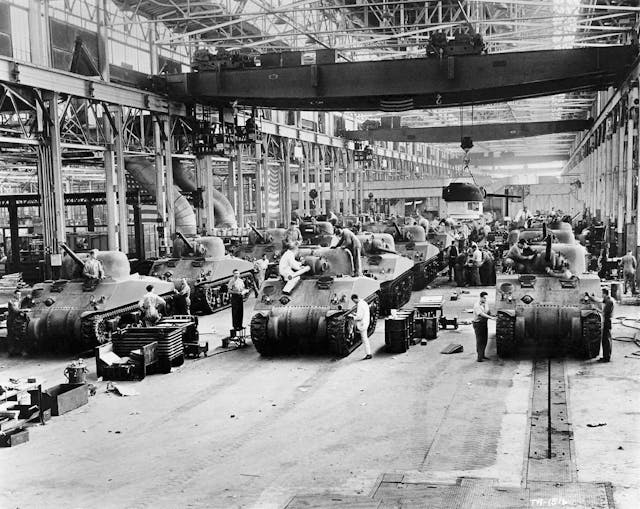
Just as WWII was ending, Chrysler finally finished a turboprop engine design codenamed A-86. Though jet engines made similar power to piston-powered ones, jet engines were far smaller and lighter, meaning that planes could be scaled up, perhaps even push right to the sonic barrier. When the need for aviation advancement became less urgent, Chrysler killed the project. Could we put the turbine engine in a car? the engineers wondered.
Jet engines are incredibly space-efficient for a plane, but the turboprop didn’t immediately work in a car. The issues to solve were the same as you’d encounter when packaging any other powertrain: How to cool the engine, where to store the fuel, and which transmission to use.
It is not a jet car
A turbine-powered plane is pushed through the atmosphere by the force of the air exiting the turbine, or thrust. That wasn’t going to work well in vehicle traffic.
To make turbine power work on the streets, engineers added a second-stage turbine. Driven by the air coming out of the initial turbine, this second-stage unit also held a 10:1 gear reduction, which reduced the first turbine’s engine speed (40,000–50,000 rpm) to something a rear axle could accommodate. This second-stage turbine is the reason why the Chrysler is a turbine car, not a jet car.
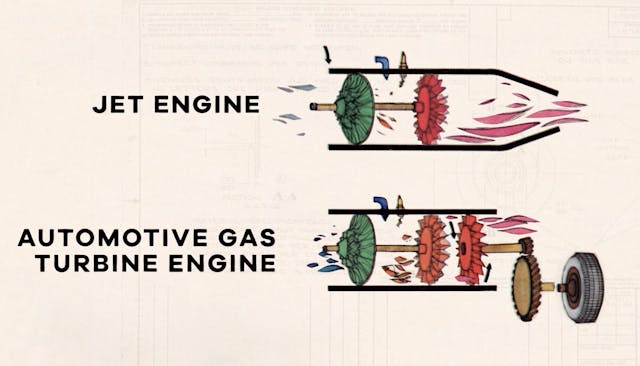
To make the Chrysler Turbine behave like users expected cars to behave, throttle response and fuel supply also had to be radically altered. What engineers did not have to deal with, though, was vibration. A turbine engine’s internal parts only rotate; they do not reciprocate.
It can run on just about anything combustible
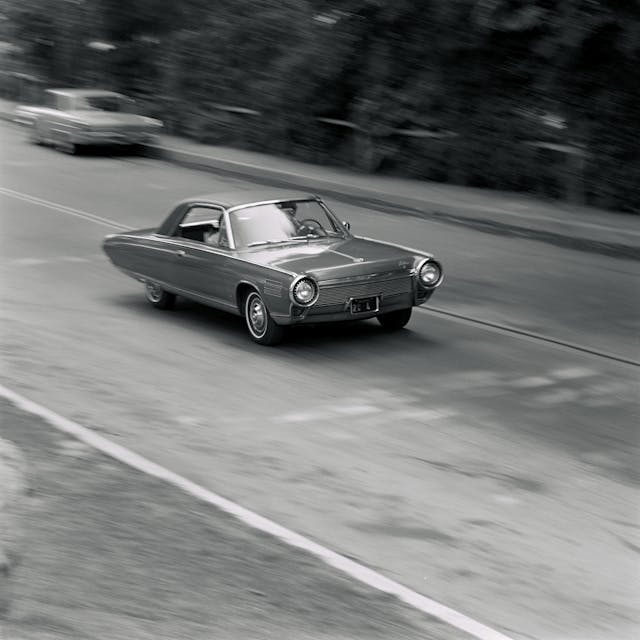
Unlike a piston engine, a turbine engine does not compress its fuel, so it can run on substances that would auto-ignite under compression or have trouble burning quickly enough for a short power stroke. Jerry Gross, one of the engineers from the Chrysler program, took one of the Turbine cars out to a peanut festival and fed it peanut oil. He said the car smelled like a restaurant kitchen but ran fine. Another story goes that, while in France, someone once ran the car on Chanel N°5. We would hate to see that bill …
Chrysler wasn’t the first to try turbine power

As early as 1949, Rover also had the idea to stuff a turbine powerplant under the hood of a car, so the post-war race to leave the piston behind became a match between the U.S. and England. Chrysler did not represent the U.S. alone: All the big auto manufacturers of the 1960s were experimenting with some type of turbine propulsion. It was Chrysler who went all-in, though, and created something more than a one-off show car. That investment made Chrysler’s efforts all the more memorable.

Real people got to drive them
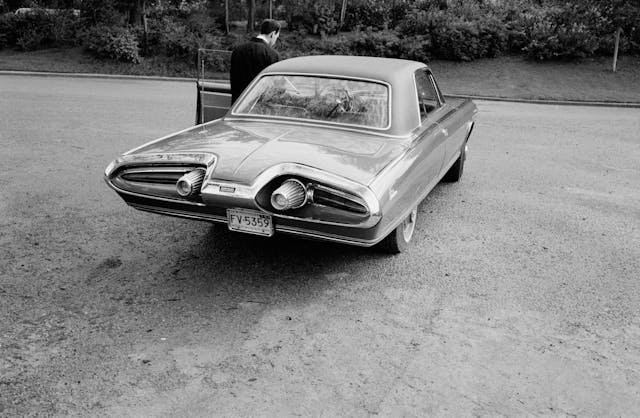
After the flurry of public relations stunts, in which Chrysler showed a few turbine cars at events across the country, the company took it up a notch by putting turbine cars in the garages of consumers. Not engineers. Not marketing people. Real-world users who lived with the car day in and day out for weeks at a time.
Engineers and designers can do a lot of testing, but those specialists think and drive differently than the average user does. Does the car have an adequate cooling system? Does it have the proper throttle response? How happily will it idle in traffic? All of these questions would normally be answered over months of testing, but Chrysler decided not to wait. In total, 203 lucky drivers got their own turbine car—Chrysler built 50—for three months. The cars were out in the wild, and people who paid attention could recognize one at a glance.
Not just bronze, Turbine Bronze
Chrysler didn’t really need the turbine cars to stand out visually, since the wild exhaust sound made it pretty obvious, but a little extra flair never hurt anybody.
The light-bronze color choice was safe enough to blend into ’60s traffic but unusual enough that the car would catch the public’s eye. The whole 50-car Turbine fleet wore this color. (Chrysler brought back Turbine Bronze in 2013 for a one-off 300C homage, but it wasn’t nearly the same.) The paint, the interior details, and the streamlined, jet-influenced silhouette all combined to be a subtle yet dashing car that is now forever documented as a critical piece of our automotive history.
***
Check out the Hagerty Media homepage so you don’t miss a single story, or better yet, bookmark it. To get our best stories delivered right to your inbox, subscribe to our newsletters.

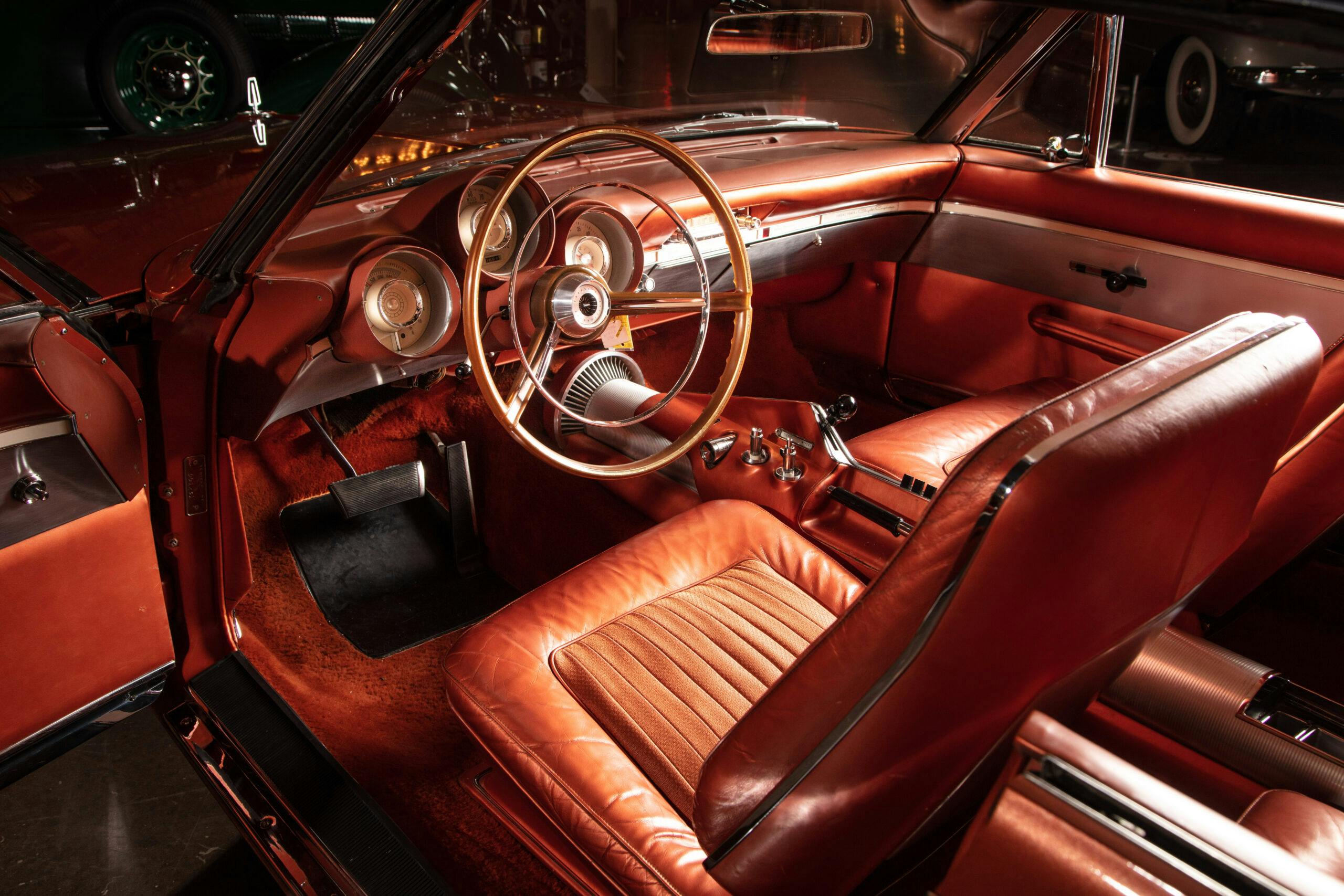
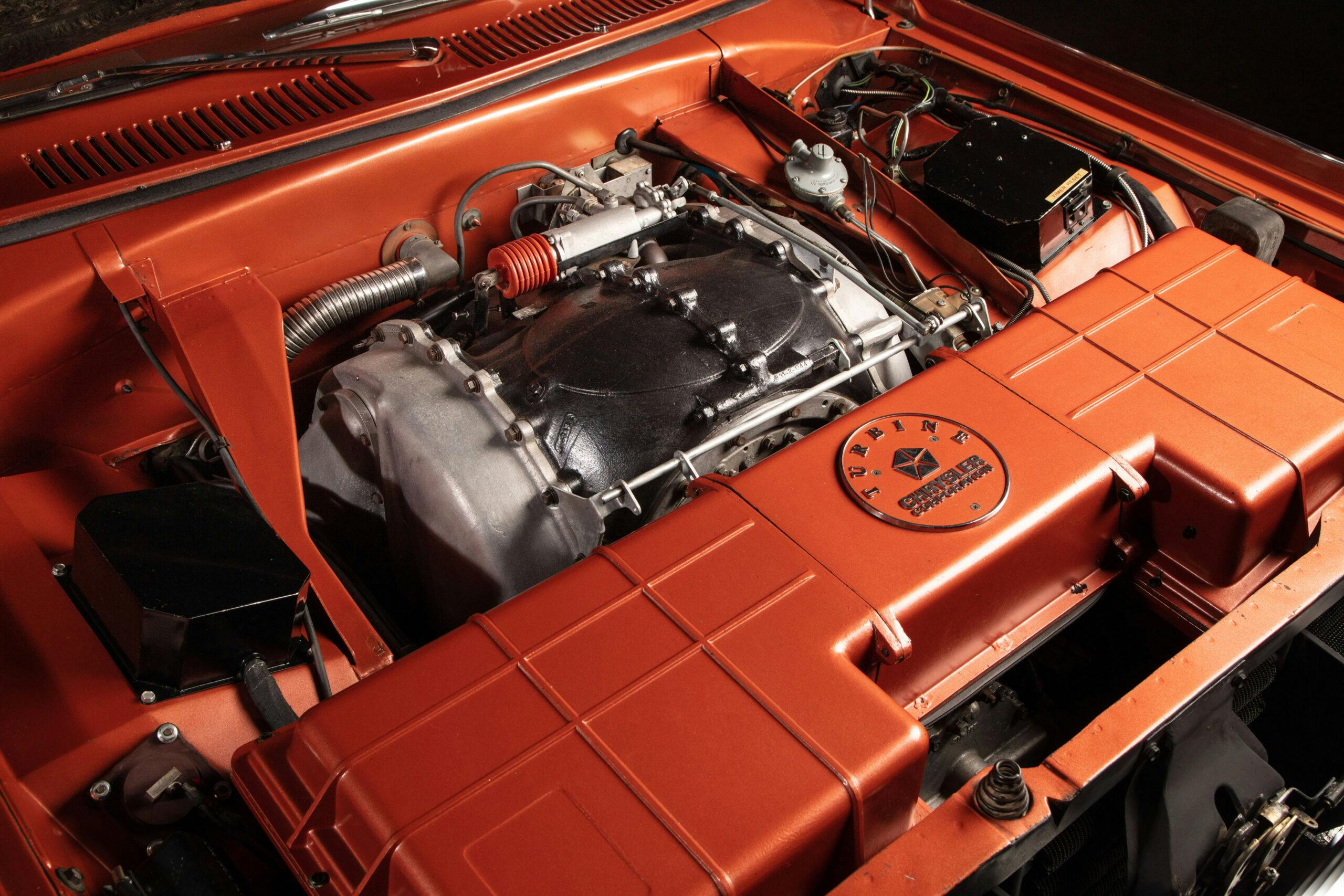


Did’nt one run in the Indianapolis 500?
Not an actual Chrysler Turbine car but, yes Andy Granatelli, race team owner had two turbine powered Indy Cars…….one driver was Graham Hill. I was at that race and I can tell you that on the first lap, the turbine car was a 1/2 mile ahead of the others (front straight). I believe it was that same race, the turbine race car would have won the race if it wasn’t for a $5. bearing that broke very near the end of the race.
The year before, Parnelli Jones ran a 4WD STP turbine in the race. In spite of a spin, it led most of the race and dropped out vere late in the race. Andy Granatelli had, I believe three turbines of a far different design in the year you’re referring to, One dropped out early, and a late yellow caused the other two to overheat and Granatelli’s heart was broken again.
I believe we still have one here in St. Louis at the Museum of Transportation. It was still there last I saw it. It is always a crowd pleaser at car shows. They have performed the nickel trick numerous times. Awesome to see and hear!
Not even a Chrysler fan, but I love cars & good stories about cars. This was a great story. All those engineers getting back together years later to try & restore Jay Leno’s destroyed turbine engine. Thats just crazy, & kind of emotional.
I think a Mich. state snow plow hit one on west us2 in mackinac county
I worked on the ’76 B body equipped with this engine. There were two major pitfalls. First, we tried to create hot pressed ceramic wheels to replace the machined blade systems, but tech at that time wasn’t good enough and the 3 machined wheels cost more than a complete gas engine. Second, the EPA tried to measure emissions with their existing hardware, checking both exhaust and cooling air mixed together without referencing ambient air, and wouldn’t budge on passing the car. Imagine that, govm’t workers being obdurate and obtuse.
Our neighbors had an engineer who got to drive one of these, and we got to commute with him to southern Colorado with several times. I just knew it was strange sounding. I was only about nine or 10 at the time. The guy was an engineer by trade, and was always analyzing everything from airplanes to bridges and now the car. I wish that I’ve been old enough to have understood everything but I did get to ride several hundred miles in it. I’ll never forget the copper bronze color. It was a piece of history, and a few people realized it at the time.
WOW! I knew a little about the Chrysler Turbine car, I am so thankful for Hagerty’s putting this video together!
When I lived in Cincinnati, going to highschool back in ’64-65 a student who’s father was a Chrysler employee, took her driver’s instruction in one of those 50 cars. It was brought to the highschool and I remember it in the front circle and they started it up……….very different from what we were used to………a memorable time.
one of my neighbors in Bellwood Illinois had one, he always filled up at our Holiday gas station in town. I was eleven years old and was impressed by the sound it made along with the 707s that flew over from near by O’Hare airport.
Currently reading the book “Chrysler’s Turbine Car”. Interesting read. All were painted Turbine Bronze except one, which was white. I saw won at the Henry Ford Museum a few years ago and I saw one at the Walter P. Chrysler museum (now closed) In which they did start it.
While walking to my junior high school in New Jersey one day, probably in 1964, I saw a Chrysler Turbine Car drive by. I knew exactly what it was and almost fell over from surprise. I still can visualize it to this day.
Well done. Good blend of the engineering stuff as well as the emotional/human connections
Ther is one at the Gilmore museum in Hickory Corners Mi
I’m envious of rhose who got to ride in one. I saw one parked at Riverside International Raceway once, and heard it start up. Certainly not a normal engine sound!
And the styling is absolutely freaking gorgeous!
Saw one on the street in Fort Wayne, Indiana. Wow!